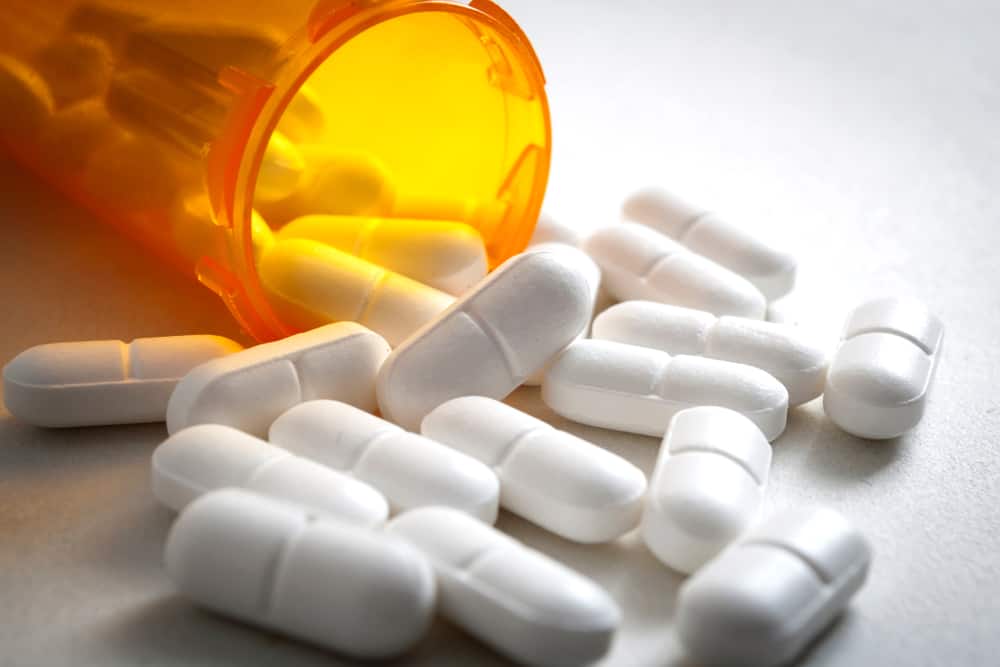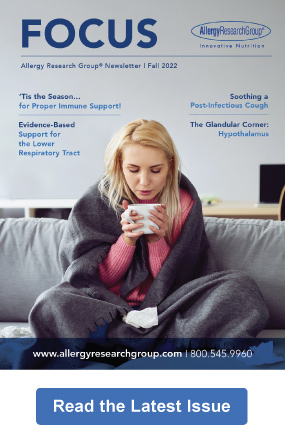Bouncing Back After Antibiotic Use: Probiotics to the Rescue!
Share this post
Restoring balance and healthy function to the gut and beyond
Chances are if you are the owner of a human body, you’ve taken at least one course of antibiotics in your lifetime. Whether it was bubble-gum flavored amoxicillin for that ear infection in childhood or penicillin for the case of strep throat that roared through the school, your body was likely both helped and (to some extent) harmed by antibiotic medication.
The impact of antibiotics
Antibiotic prescription is the standard of care for various bacterial infections affecting virtually any site in the body, and for good reason: antibiotic medications have helped save millions of lives. But they are not without their risks of side effects: as the name anti-biotic implies, these medications kill bacteria. And although this can be quite helpful, say, in the case of killing the E. coli that’s causing a urinary tract infection before it can crawl up into the kidneys and wreak havoc there, antibiotic medications are not particularly discerning in what strains they kill, or where. By their very nature, antibiotics disrupt the microbial milieu of the digestive tract and other body systems, killing the “good” strains of bacteria along with the bad.
This shift in bacterial balance predisposes antibiotic users to dysbiosis, or a microbial imbalance, leaving them at increased risk of side effects, particularly in the gastrointestinal tract where a large percentage of these organisms are found. Reduced microbial diversity can also encourage the growth of opportunistic pathogens such as Clostridicum difficile (aka “C-diff”), a potentially life-threatening condition,[1] as well as a decline in the immune system’s ability to fight off infections in various sites of the body. Alterations to the normal microbial milieu is why many people notice diarrhea or other digestive complaints after taking an antibiotic, and why women often develop vaginal yeast infections after a course of treatment. On a longer-term scale, decreased microbial diversity has also been associated with obesity,[2] atopic conditions like eczema, asthma, and allergies,[3],[4],[5],[6] and even mood imbalances like anxiety and depression.[7]
Bacteria, furthermore, can mutate and adapt over time to outsmart the drugs we use to treat them. This has resulted in antibiotic-resistant infections, which has the medical community wondering: what will we do when the antibiotics available to us stop working? Both conventional and alternative-minded practitioners agree that we need to be more discerning of when antibiotics are – and are not – truly necessary in the treatment of infections,[8],[9] yet despite this awareness the Center for Disease Control (CDC) estimates that 30% of all antibiotic prescriptions in the US are unnecessary.[10]
But in those cases in which an antibiotic should indeed be used, there are thankfully other therapies we can employ to both increase the infection-fighting efficacy of the antibiotic and to minimize its potentially harmful side effects. Case in point: probiotics.
The case for high-potency probiotics during/after antibiotic use
Supplementing with a carefully selected probiotic formula during, after, and potentially in lieu of conventional treatment may not only help treat infectious illnesses more effectively, but may also reduce the risk of their recurrence.
Because of their efficacy in countering dysbiosis,[11] probiotics – in particular strains of Lactobacillus and Bifidobacterium species[12] – have been shown to effectively treat not only acute infectious diarrhea,[13] but also antibiotic-associated diarrhea,[14],[15],[16] including even C. difficile infection.[17] In fact, over a decade’s worth of meta-analyses have shown probiotics can reduce the incidence of antibiotic-associated diarrhea by 42-50%,[18],[19],[20] making the case for probiotic supplementation around antibiotic use quite compelling.
Over a decade’s worth of meta-analyses have shown probiotics can reduce the incidence of antibiotic-associated diarrhea by 42-50%, making the case for probiotic supplementation around antibiotic use quite compelling.
While probiotics are clearly useful in reducing the side effects of antibiotic use, it’s important to note that not all strains are created equal, and that higher doses of probiotics often confer better outcomes than lower doses.[21] The probiotic strains shown in the studies to be of benefit include Lactobacillus rhamnosus, L. casei, L. acidophilus, L. reuteri, L. plantarum, L. casei, Bifidobacterium lactis, B. infantis, B. longum, Saccharomyces boulardii, and Bacillus coagulans, at potencies of 100 million to 50 billion colony forming units (CFUs) per day in adults. In the studies done on children, doses of over 5 billion CFU per day yielded better outcomes than lower doses.[22]
Considering that lactobacilli make up over 90% of the microbes present in the female genitourinary system and that these bacteria are extremely sensitive to destruction by antibiotic medications, the case for probiotic supplementation in the prevention and treatment of vaginal, urinary, and reproductive infections in women is likewise cogent.
Numerous trials have demonstrated that oral administration of specific strains of lactobacilli – in particular L. crispatus, L. rhamnosus, L. gasseri and L. reuteri – can both maintain and restore healthy genitourinary microbiota in females.[23],[24],[25],[26],[27] Oral probiotics may be a side-effect-free standalone treatment for vaginitis, saving women from having to use antibiotics at all.[28]
Oral probiotics may be a side-effect-free standalone treatment for vaginitis, saving women from having to use antibiotics at all.
The addition of a probiotic supplement to the standard antibiotic treatment regimens for bacterial vaginosis, yeast infections, and other causes of infectious vaginitis has been shown in several studies to not only improve the initial success of treatment, but also to confer healthier vaginal microflora after antibiotic use and reduce the risk of future relapse.[14],[15],[29],[30],[31]
Regardless of the site of infection or the reason for antibiotic use, the argument for using probiotics in conjunction with antibiotics is strong. By minimizing the disruption to the microbial balance caused by antibiotics, a high quality, multi-strain probiotic supplement makes antibiotic-based treatments more successful in fighting off infections, mitigates the side effects and long-term consequences of taking antibiotic medications, and significantly reduces the risk of relapse. The benefits of using probiotics as an adjuvant to antibiotic prescription are clear.
Click here to see References
[1] Schäffler H, et al. Clostridium difficile – From colonization to infection. Front Microbiol. 2018 Apr 10;9:646.
[2] Turnbaugh PJ, et al. A core gut microbiome in obese and lean twins. Nature. 2009 Jan 22;457(7228):480-4.
[3] Kalliomäki M, et al. Probiotics in primary prevention of atopic disease: a randomised placebo-controlled trial. Lancet. 2001 Apr 7;357(9262):1076-9.
[4] Zhao M, et al. Treatment efficacy of probiotics on atopic dermatitis, zooming in on infants: a systematic review and meta-analysis. Int J Dermatol. 2018 Feb 8.
[5] Hoang BX, Shaw G, Pham P, Levine SA. Lactobacillus rhamnosus cell lysate in the management of resistant childhood atopic eczema. Inflamm Allergy Drug Targets. 2010 Jul;9(3):192-6.
[6] Butel M-J, et al. The developing gut microbiota and its consequences for health. J Dev Orig Hlth Dis. 2018:1-8.
[7] Luna RA, et al. Gut brain axis: diet microbiota interactions and implications for modulation of anxiety and depression. Curr Opin Biotechnol. 2015 Apr;32:35-41.
[8] Roca I, et al. The global threat of antimicrobial resistance: science for intervention. New Microbes New Infect. 2015 Apr 16;6:22-9.
[9] Davey P, et al. Interventions to improve antibiotic prescribing practices for hospital inpatients. Cochrane Database of Systematic Reviews 2013; 4: CD003543.
[10] Fleming-Dutra KE, et al. Prevalence of inappropriate antibiotic prescriptions among US ambulatory care visits, 2010-2011. JAMA: The Journal of the American Medical Association 2016; 315(17): 1864-73.
[11] McFarland LV. Use of probiotics to correct dysbiosis of normal microbiota following disease or disruptive events: a systematic review. BMJ Open. 2014;4, e005047.
[12] Lievin-Le Moal V, Servin AL. Anti-infective activities of lactobacillus strains in the human intestinal microbiota: from probiotics to gastrointestinal anti-infectious biotherapeutic agents. Clin Microbiol Rev. 2014;27:167-99.
[13] Allen SJ, et al. Probiotics for treating acute infectious diarrhoea. Cochrane Database Syst Rev. 2010;CD003048.
[14] Johnston BC, et al. Probiotics for the prevention of pediatric antibiotic-associated diarrhea. Cochrane Database Syst Rev. 2011;CD004827.
[15] Videlock EJ, Cremonini F. Meta-analysis: probiotics in antibiotic-associated diarrhoea. Alimentary Pharmacol Therapeut. 2012;35:1355-69.
[16] Hempel S, et al. Probiotics for the prevention and treatment of antibiotic-associated diarrhea: a systematic review and meta-analysis. JAMA. 2012;307:1959-69.
[17] Johnston BC, et al. Probiotics for the prevention of Clostridium difficile-associated diarrhea: a systematic review and meta-analysis. Ann Intern Med. 2012;157:878-88.
[18] D’Souza AL, et al. Probiotics in prevention of antibiotic associated diarrhoea: meta-analysis. BMJ. 2002 Jun 8;324(7350):1361.
[19] Sazawal S, et al. Efficacy of probiotics in prevention of acute diarrhoea: a meta-analysis of masked, randomised, placebo-controlled trials. Lancet Infect Dis. 2006 Jun;6(6):374-82.
[20] McFarland LV, et al. Meta-analysis of probiotics for the prevention of antibiotic associated diarrhea and the treatment of Clostridium difficile disease. Am J Gastroenterol. 2006 Apr;101(4):812-22.
[21] Courvalin P. Antibiotic resistance: the pros and cons of probiotics. Dig Liver Dis. 2006 Dec;38 Suppl 2:S261-5.
[22] Goldenberg JZ, et al. Probiotics for the prevention of pediatric antibiotic-associated diarrhea. Cochrane Database Syst Rev. 2015 Dec 22;(12):CD004827.
[23] Reid G, et al. Oral use of Lactobacillus rhamnosus GR-1 and L. fermentum RC-14 significantly alters vaginal flora: randomized, placebo-controlled trial in 64 healthy women. FEMS Immunol Med Microbiol. 2003 Mar 20;35(2):131-4.
[24] Strus M, et al. Studies on the effects of probiotic Lactobacillus mixture given orally on vaginal and rectal colonization and on parameters of vaginal health in women with intermediate vaginal flora. Eur J Obstet Gynecol Reprod Biol. 2012 Aug;163(2):210-5.
[25] De Alberti D, et al. Lactobacilli vaginal colonisation after oral consumption of Respecta(®) complex: a randomised controlled pilot study. Arch Gynecol Obstet. 2015 Oct;292(4):861-7.
[26] Reid G, et al. Oral probiotics can resolve urogenital infections. FEMS Immunol Med Microbiol. 2001 Feb;30(1):49-52.
[27] Petricevic L, et al. Randomized, double-blind, placebo-controlled study of oral lactobacilli to improve the vaginal flora of postmenopausal women. Eur J Obstet Gynecol Reprod Biol. 2008 Nov;141(1):54-7.
[28] Vujic G, et al. Efficacy of orally applied probiotic capsules for bacterial vaginosis and other vaginal infections: a double-blind, randomized, placebo-controlled study. Eur J Obstet Gynecol Reprod Biol. 2013; 168(1):75-79.
[29] Anukam K, et al. Augmentation of antimicrobial metronidazole therapy of bacterial vaginosis with oral probiotic Lactobacillus rhamnosus GR-1 and Lactobacillus reuteri RC-14: randomized, double-blind, placebo controlled trial. Microbes Infection 2006;8:1450-4.
[30] Martinex RCR, et al. Improved cure of bacterial vaginosis with single dose of tinidazole (2 g), Lactobacillus rhamnosus GR-1, and Lactobacillus reuteri RC-14: a randomized, double-blind, placebo-controlled trial. Can J Microbiol 2009;55:133-8.
[31] Davar R, et al. Comparing the Recurrence of Vulvovaginal Candidiasis in Patients Undergoing Prophylactic Treatment with Probiotic and Placebo During the 6 Months. Probiotics & Antimicro. Prot. (2016) 8: 130.
The information provided is for educational purposes only. Consult your physician or healthcare provider if you have specific questions before instituting any changes in your daily lifestyle including changes in diet, exercise, and supplement use.
Share this post
Dr. Erica Zelfand
Related posts
Acid Reflux 101
The real cause of GERD, and why we need stomach acid Most people think that acid reflux is caused by an excess of stomach acid. This is a common medical myth, and one that has resulted in widespread misunderstanding of the condition and how to best treat it. To properly understand what happens in…
Mastic Gum for Oral Health and More
The things we know now about this gum that the Greeks have seen in practice for over 2,500 years Ancient lore and cutting-edge science often converge in the arena of natural plant-based medicine. There is perhaps no better example of this than mastic gum, an aromatic, white resin derived from the Pistacia lentiscus tree….
Bile Acids: Beyond Gut Health
The role bile acids play in metabolic and liver health The use of bile therapeutically dates to ancient times. Bile from many different animals, and even humans in the time of battle, have record in traditional Chinese medicine (TCM) beginning in the Zhou dynasty from 1046-256 BCE.[1] In TCM, bile acids are used for…
Fighting Depression and Anxiety Through the Gut
Vagus nerve stimulation for mood support (Part 2 of 2) Last week’s post examined the vagus nerve (the tenth cranial nerve) and the important role it plays in connecting the body to the brain. We explored how breath, laughter, and exercise all “tickle” the nerve to send soothing, calming signals to the brain and…
Response to CBS News Report: Do Probiotics Actually Do Anything?
They got a lot right, but we have a few (cited) details to add to the conversation By Mike Grochocki, RD, LDN On June 28th, 2020 the CBS News show 60 MINUTES aired a segment on probiotics, which have become wildly popular in both professional and retail nutritional supplement markets. The main question CBS…
Lactobacillus plantarum DR7: A Probiotic For Stress Relief
When I was a young athlete, I would get sick to my stomach before every big game, race, or match. The stress I felt always manifested in my gut. Many people experience feelings of a “nervous stomach” because our brain and our gut are so intricately intertwined. Sayings like “trust your gut”, “feel it…
Categories
- Botanicals (56)
- GI Health (53)
- Healthy Aging (121)
- Immune Support (39)
- In The News (39)
- Kids Health (21)
- Stress and Relaxation (50)
- Uncategorized (1)
- Video (9)
- Vitamins & Minerals (51)




